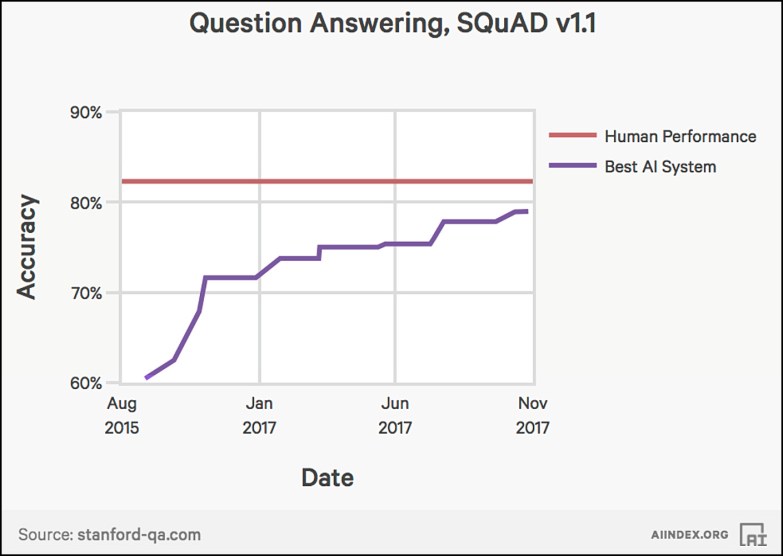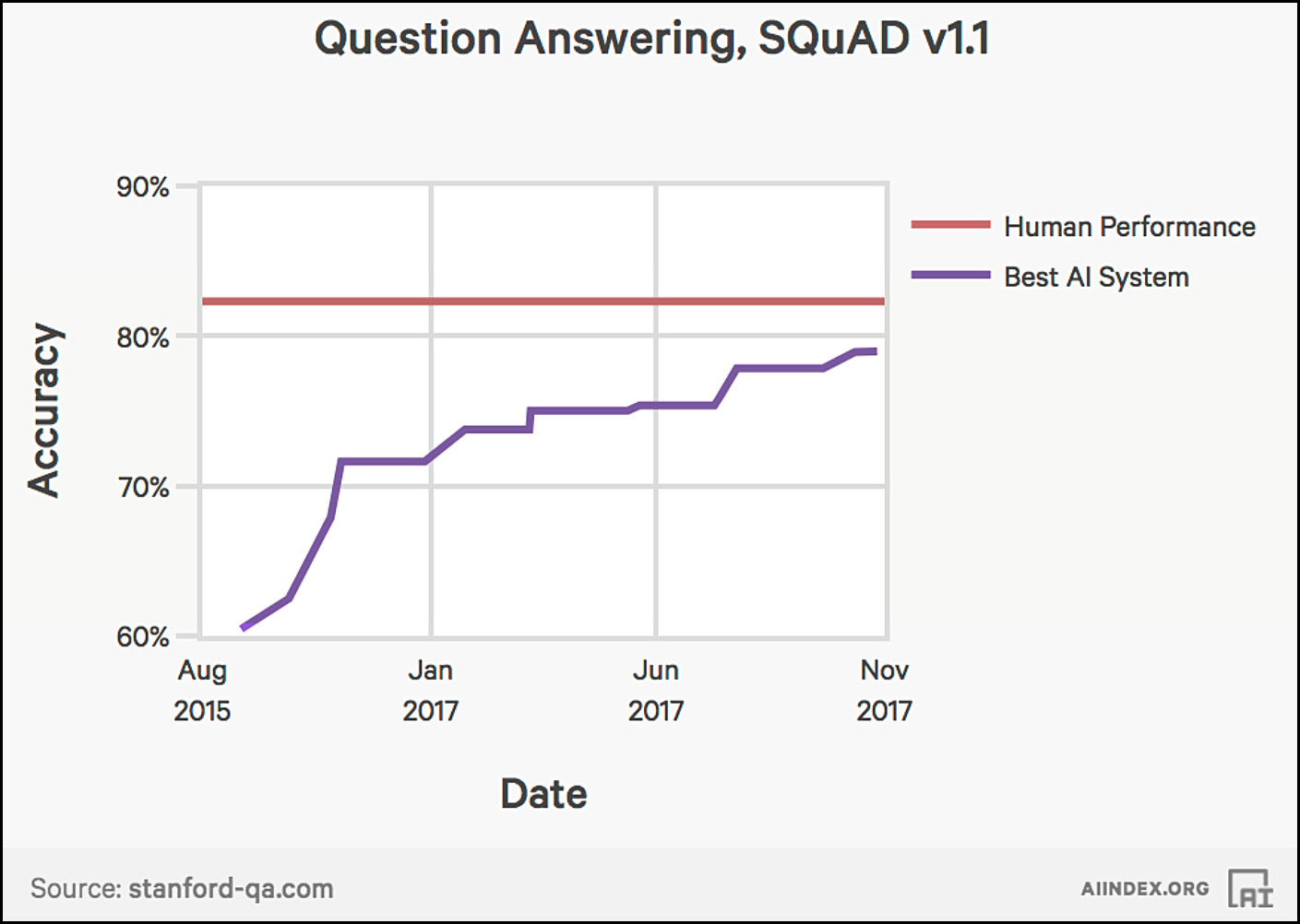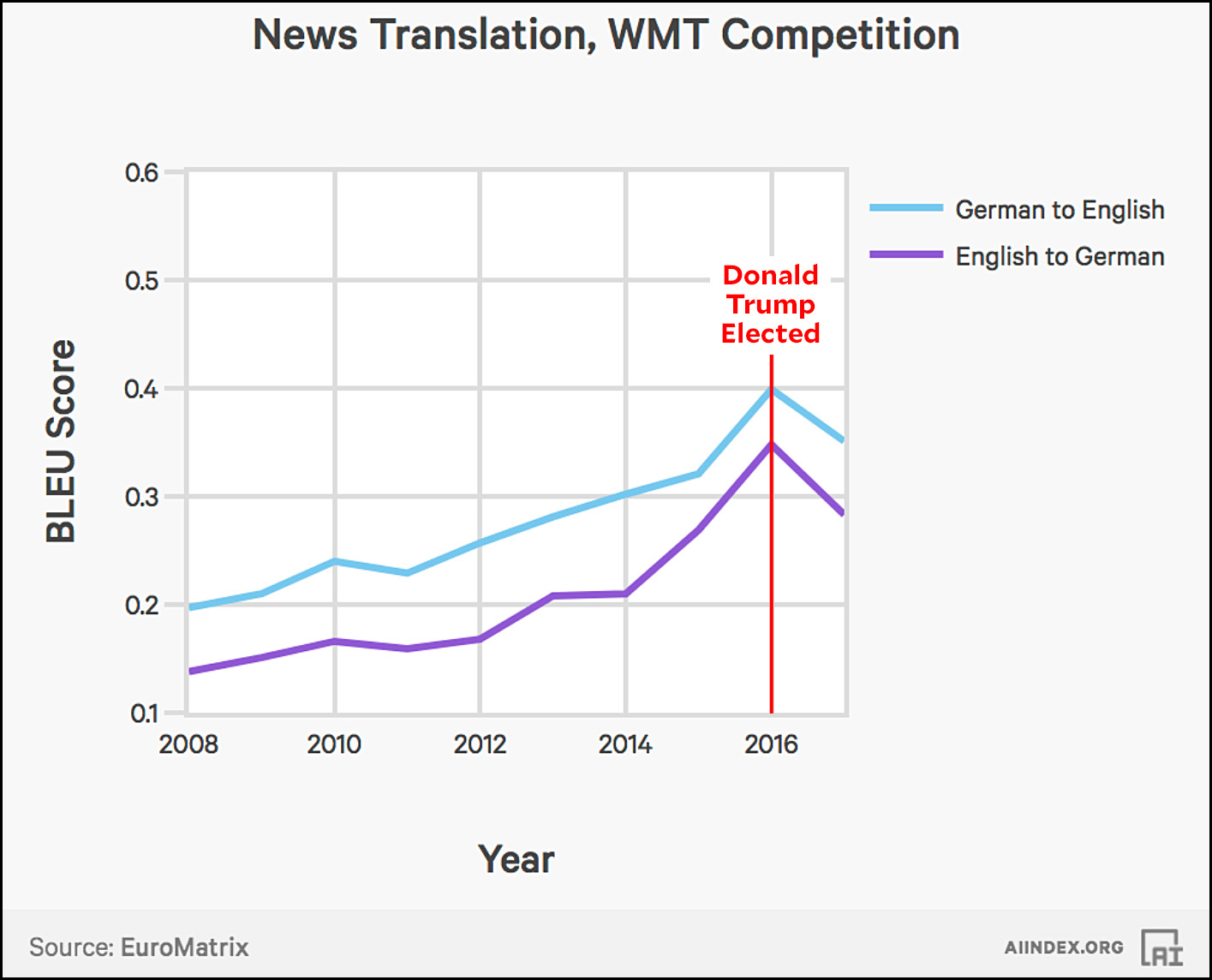
The New York Times this morning has an article about artificial intelligence:
There are basically three big questions about artificial intelligence and its impact on the economy: What can it do? Where is it headed? And how fast will it spread?
Three new reports combine to suggest these answers: It can probably do less right now than you think. But it will eventually do more than you probably think, in more places than you probably think, and will probably evolve faster than powerful technologies have in the past.
I think this basically gets things right. What we have today can’t properly be called AI at all. It’s just not advanced enough. But before long it will be, and once we hit that point—in around ten years by my guess— progress will accelerate quickly.
One of the reports the Times points to is called the AI Index, and overall I found it sort of disappointing. I don’t really much care that enrollment is up in AI classes or that we have lots of AI startups. But this was interesting:

The best measures of AI aren’t numbers in a vacuum. They’re measures that compare the best software to the average human. In this case, both computers and humans are asked to read articles and then answer questions about the content of the articles. It’s still a bit artificial, but the general idea is to test general reading comprehension, surely a decent measure of what we commonly think of as “intelligence.” Computers are now only a finger’s breadth away from human performance. That’s pretty impressive, especially considering that a computer can come up with its average answer in a second or two, compared to several minutes for us meat types.
On the other hand, this chart shows the limitations of this kind of test:

Language translation has made considerable strides in the past decade, and this chart puts a number to that. At the same time, it shows that machine translation has deteriorated in 2017. That’s hardly seems plausible.¹ As the authors admit, “It is unlikely that the performance of MT systems declined compared to 2016, but the evaluation scheme presented here is not perfect.” So take all these charts with a grain of salt.
¹Alternatively, this merely represents the Donald Trump effect. News articles in 2017 are stuffed with bizarre Trump quotes, and even the best machine translation software probably chokes when it tries to make sense of them. When it comes to bafflegab, humans are still the world champs.















